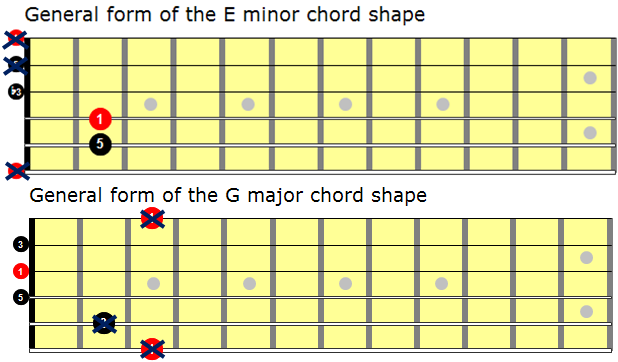
Answers to Exercises
Lesson 1: Keys and the Circle of Fifths

Lesson 2: Common Scales and their Formulas
Exercise 1: Finding the notes in a scale
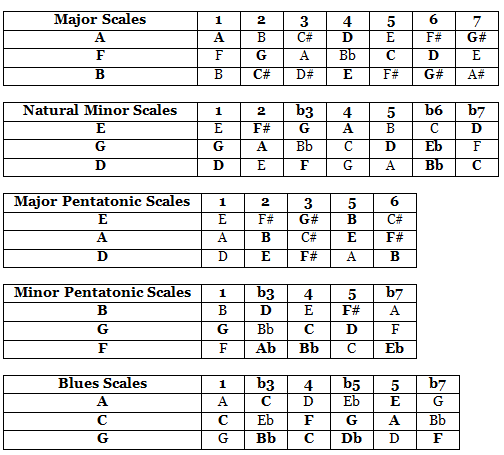
Exercise 2: More neck diagrams!
< play through the scales on the neck diagrams >
Lesson 3: Creating and Transposing Scale Patterns
Exercise 1: Transposing scale patterns
A minor blues scale ► D blues scale


F# minor pentatonic scale ► B minor pentatonic scale

Hint: In the above example, notice that the shape/pattern we are shifting is not the root shape/pattern. The key is F#, but the first note of the shape is A. This is not an issue for us, we just need to think about how to handle it. There are actually 2 ways.
One way is the same as what we’ve done previously by shifting the shape until the root notes in the shape become the new key. Again, it’s just that we have to look in the “middle” of the shape instead of the very first note because that’s where the root notes happen to reside in this shape.
The second way is to still just look at the very first note (in this case, A). The difference with doing it this way is that instead of changing that A note to what we want the new key to be, we have to change it to the b3 of what we want the key to be. In other words, in the given neck diagram, we can see that A is the b3 of the F# minor pentatonic scale (or said another way, the second note in the shape). Since we know that transposing a pattern does not change the pattern itself (only the key of it) then we know that all the notes in the pattern must maintain all the same intervals relative to each other. Thus, since the exercise wants us to transpose to the key of B, we can figure out what is the b3 in the key of B, then, that is the note we must start the shape from. Since I know this process can sound confusing, let’s reveal the answer so you can visualize what this paragraph is talking about:

Using the minor pentatonic formula, we can see that D is the b3 in the key of B minor. D is found on the 10th fret on the 6th string (thickest string). Thus, if we begin the shape from D as shown, we’ve achieved our goal of transposing the shape to the key of B.
You should also notice that since B is located on the 9th fret of the 4th string, method one would have gotten us the same result as shown above. Give it a try yourself using both methods so that you become familiar with both of them.
G natural minor scale ► B natural minor scale

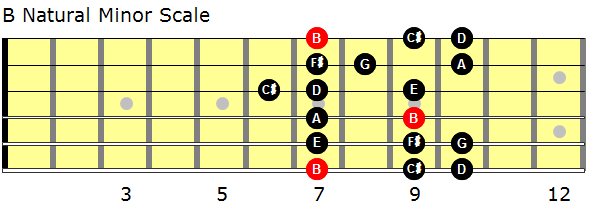

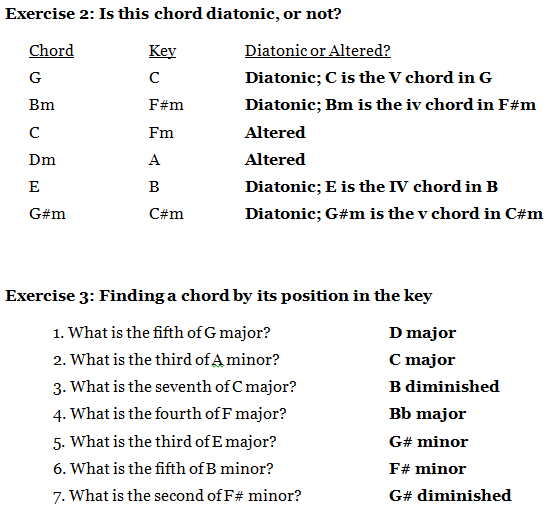
Lesson 6: Chord Construction

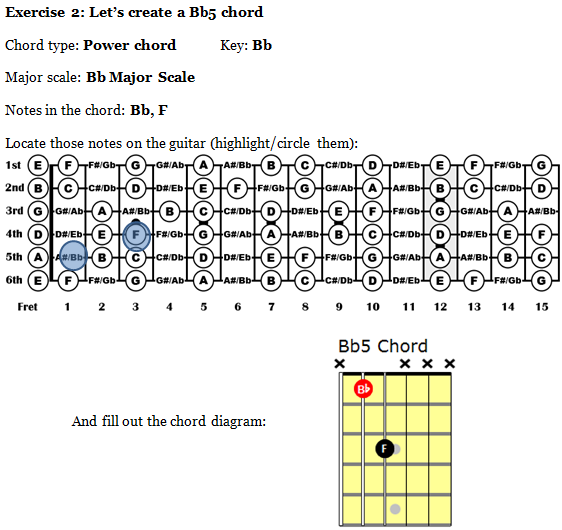
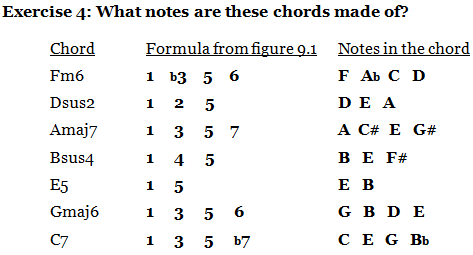

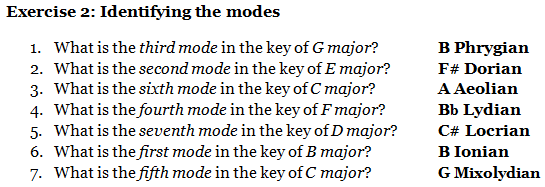
Lesson 8: Transposing Chord Shapes
Exercise 1: Transpose this chord!








Exercise 2: Which note(s) can be deleted from this chord?
*Keep in mind there is more than one correct answer.

